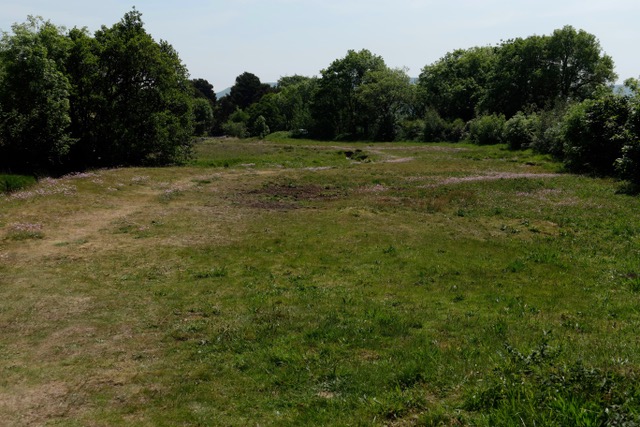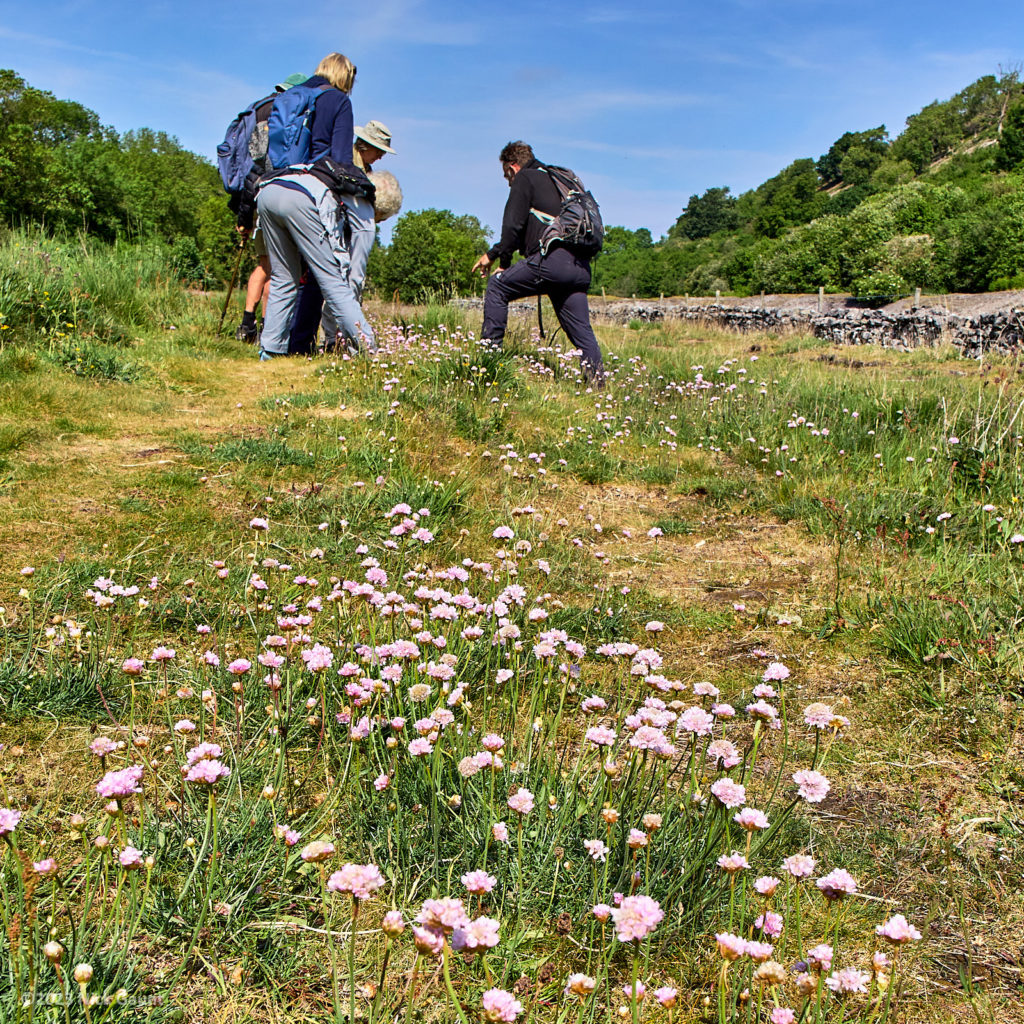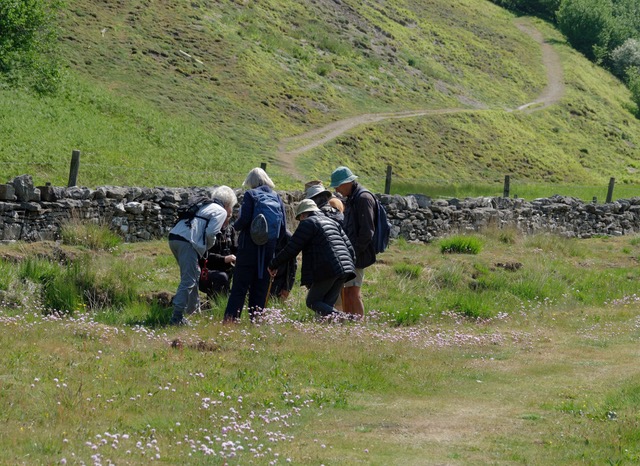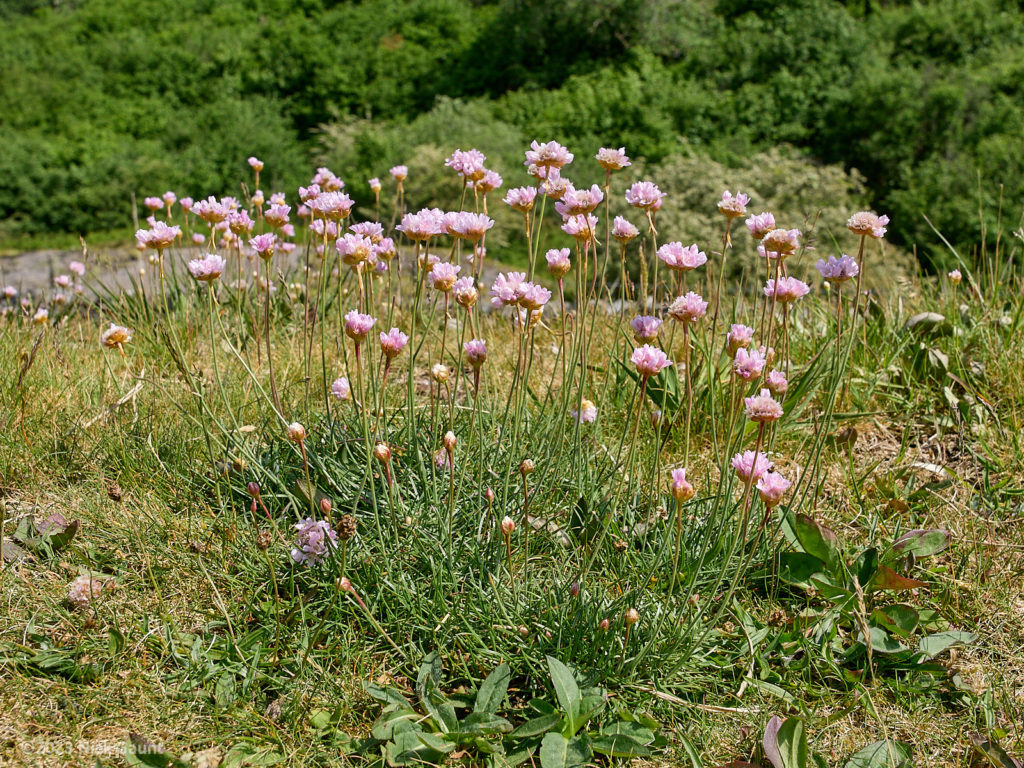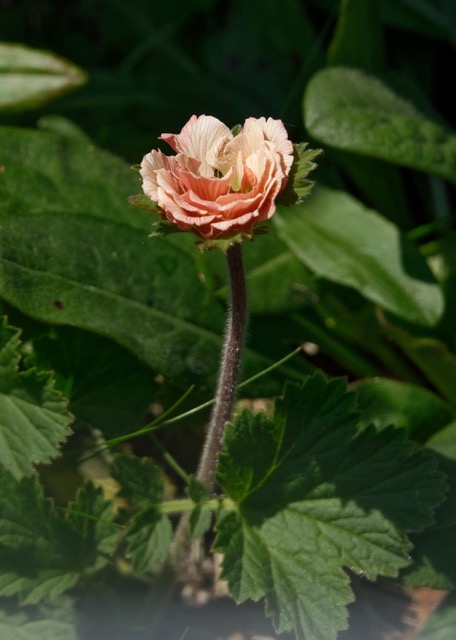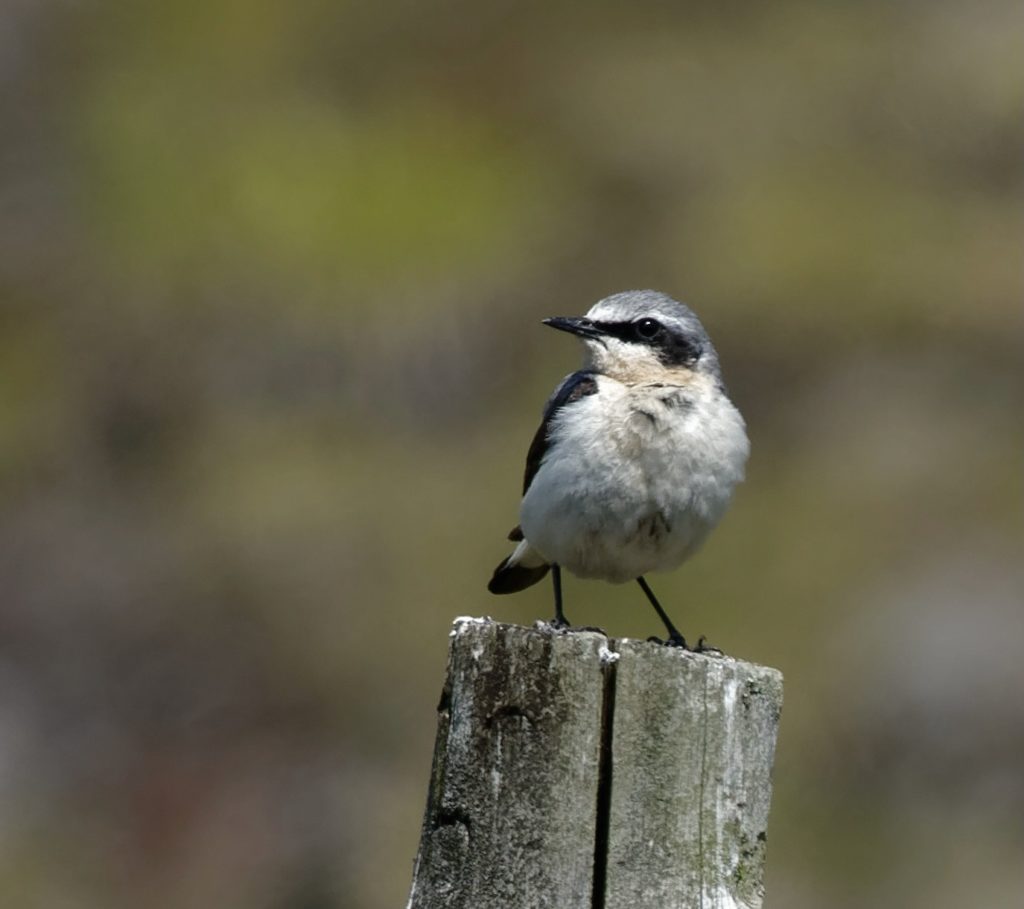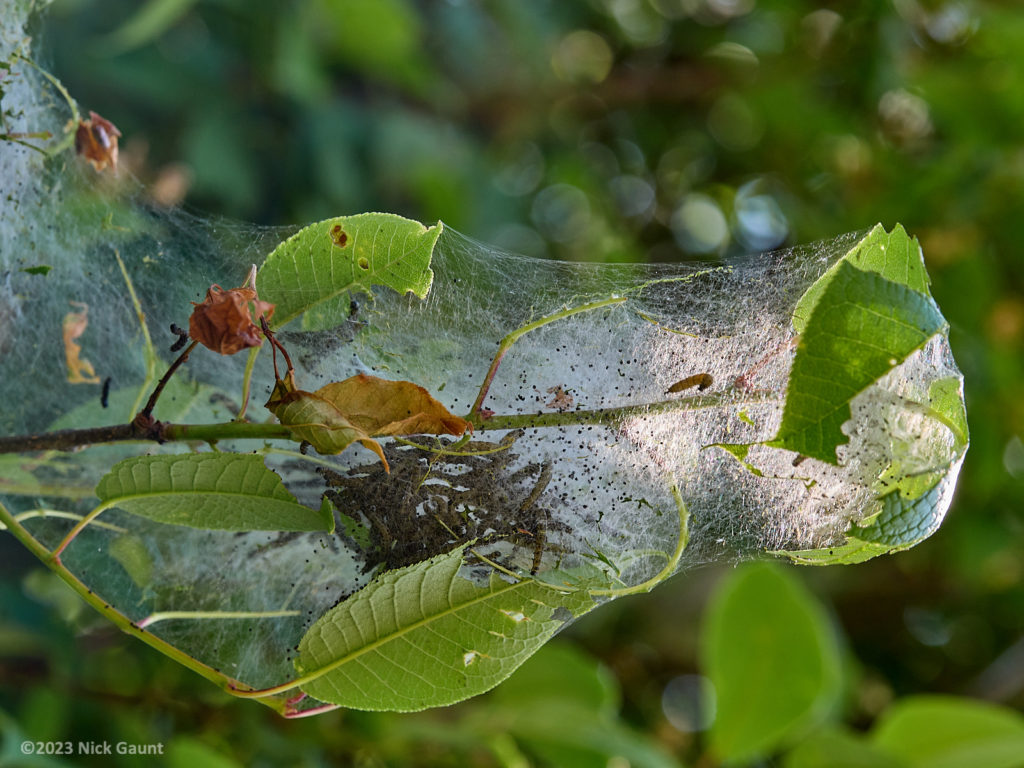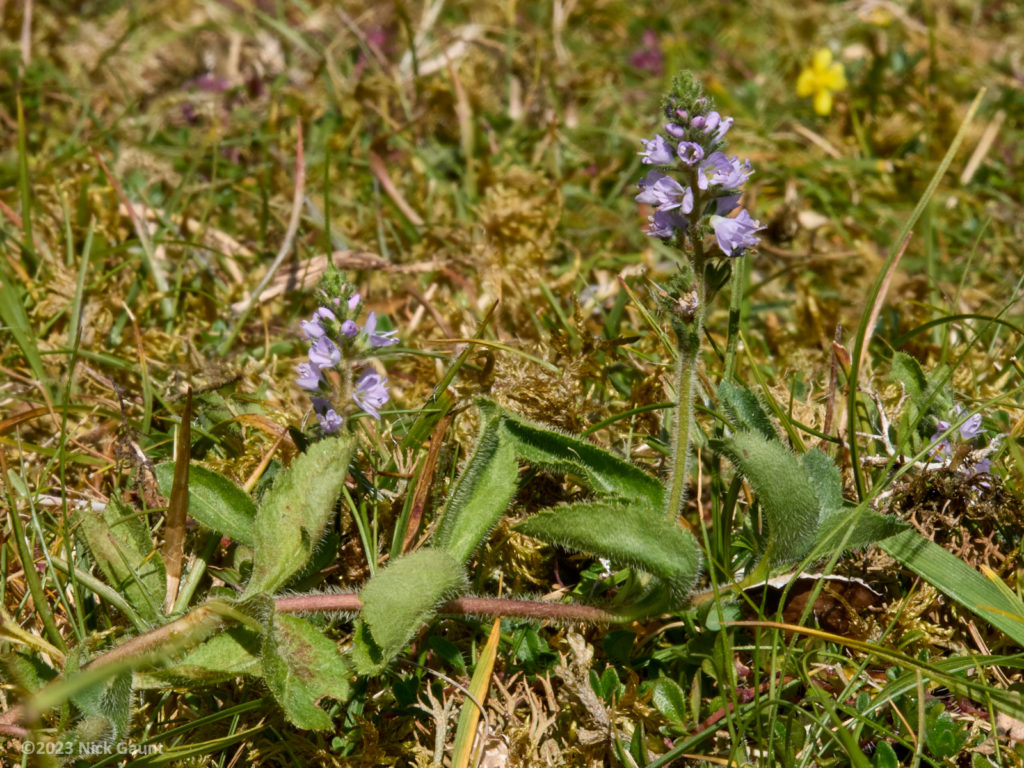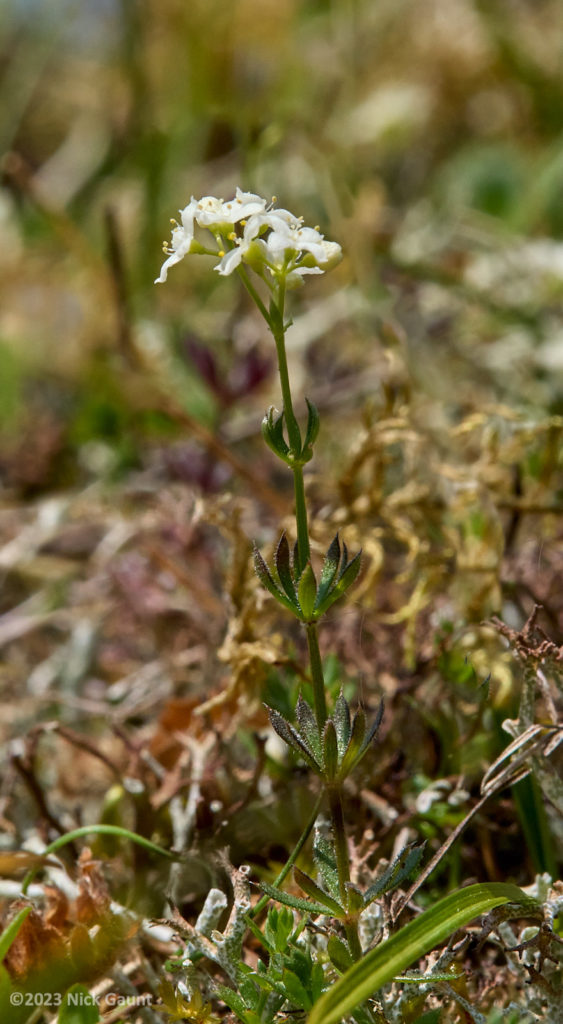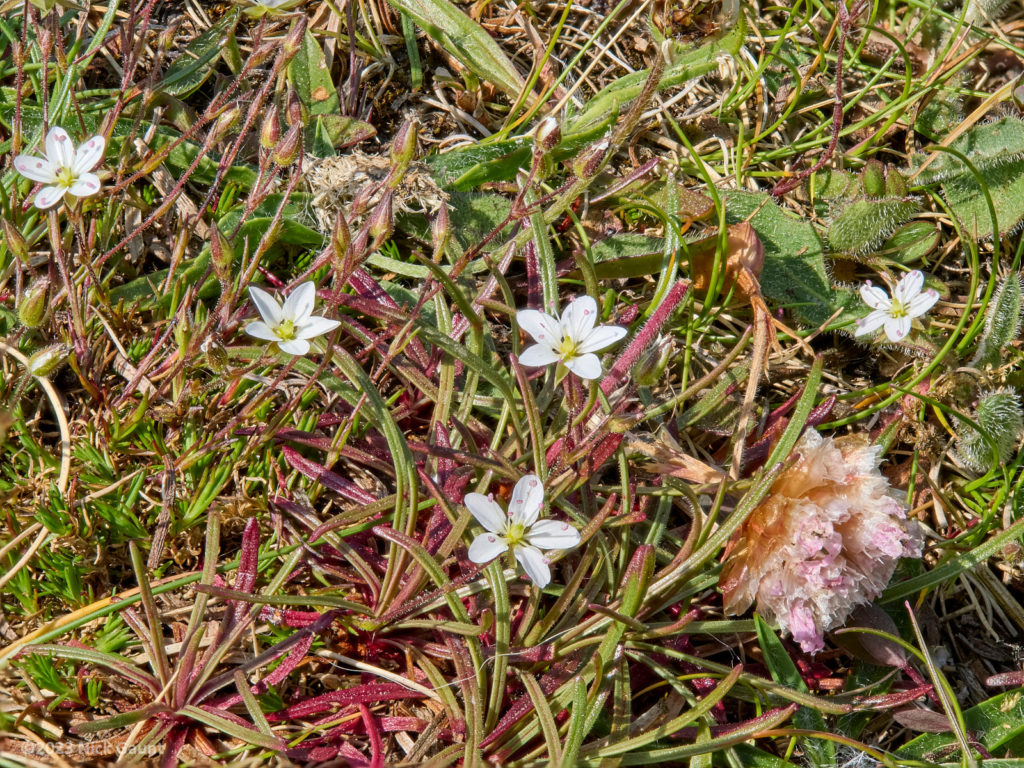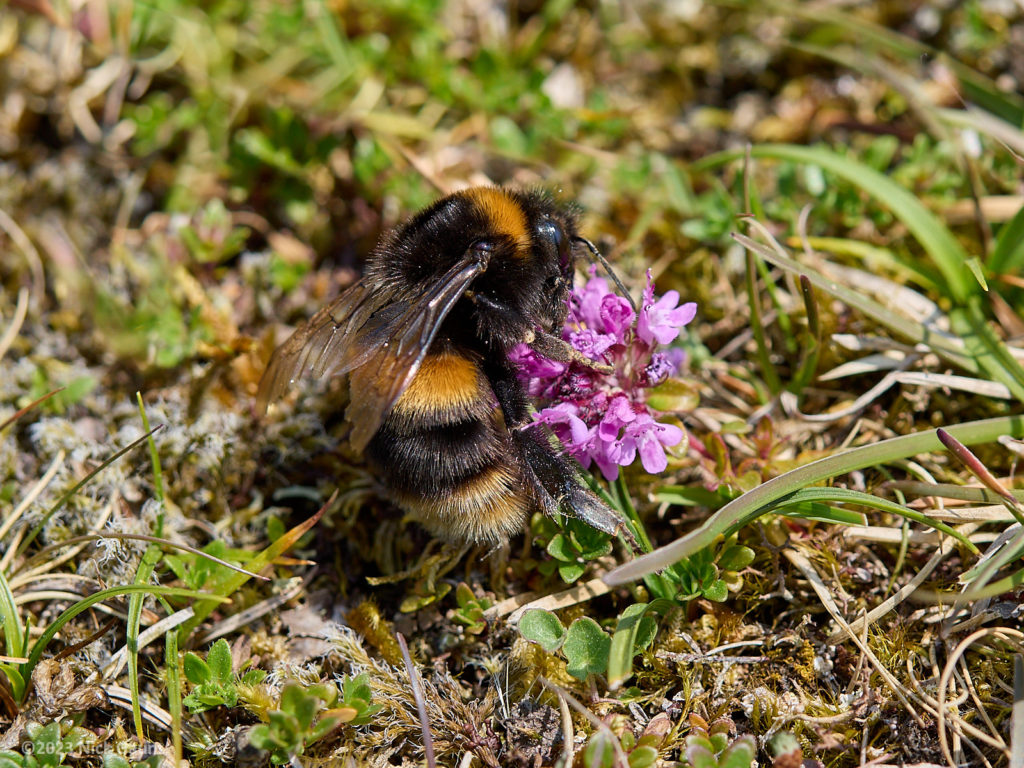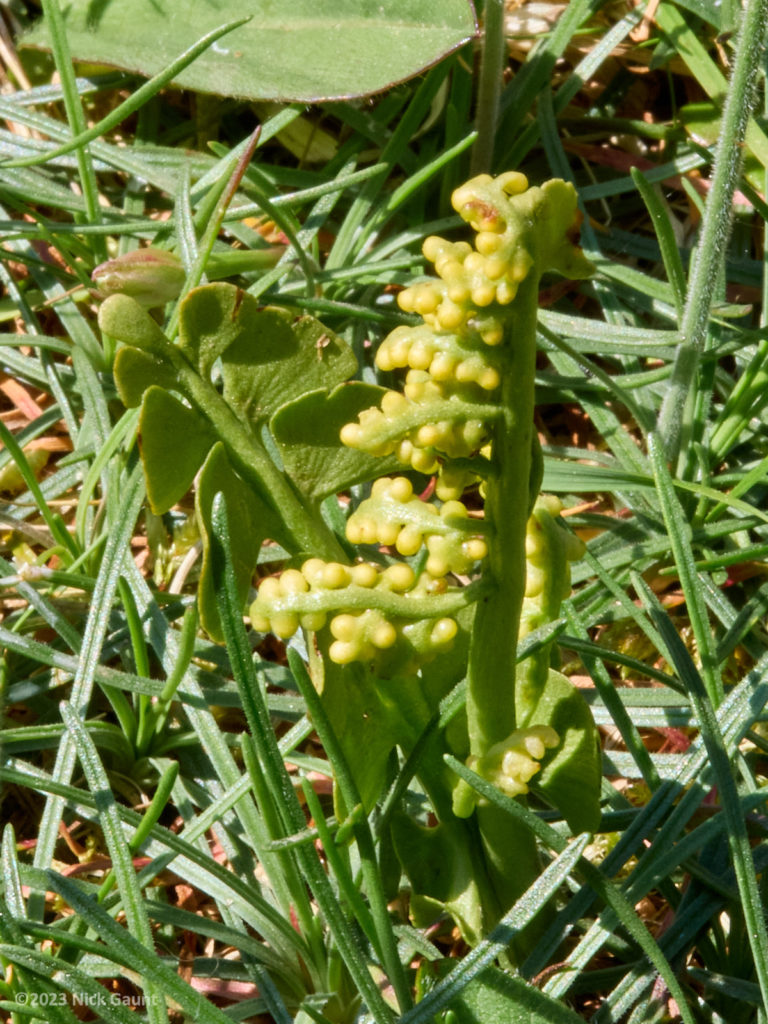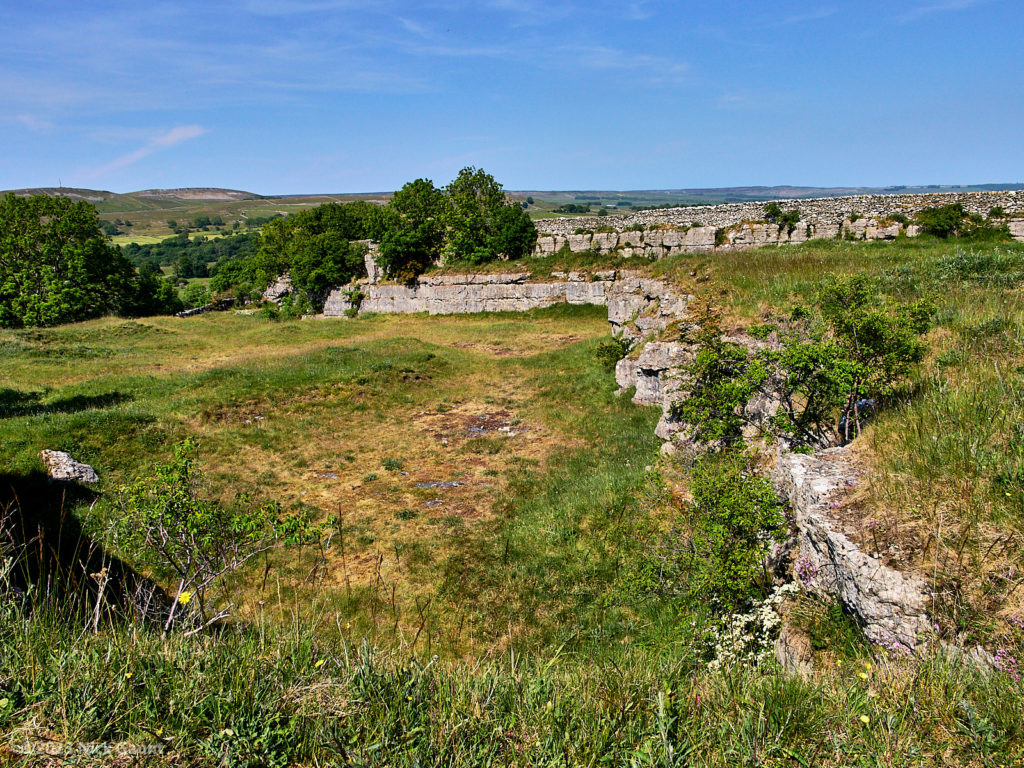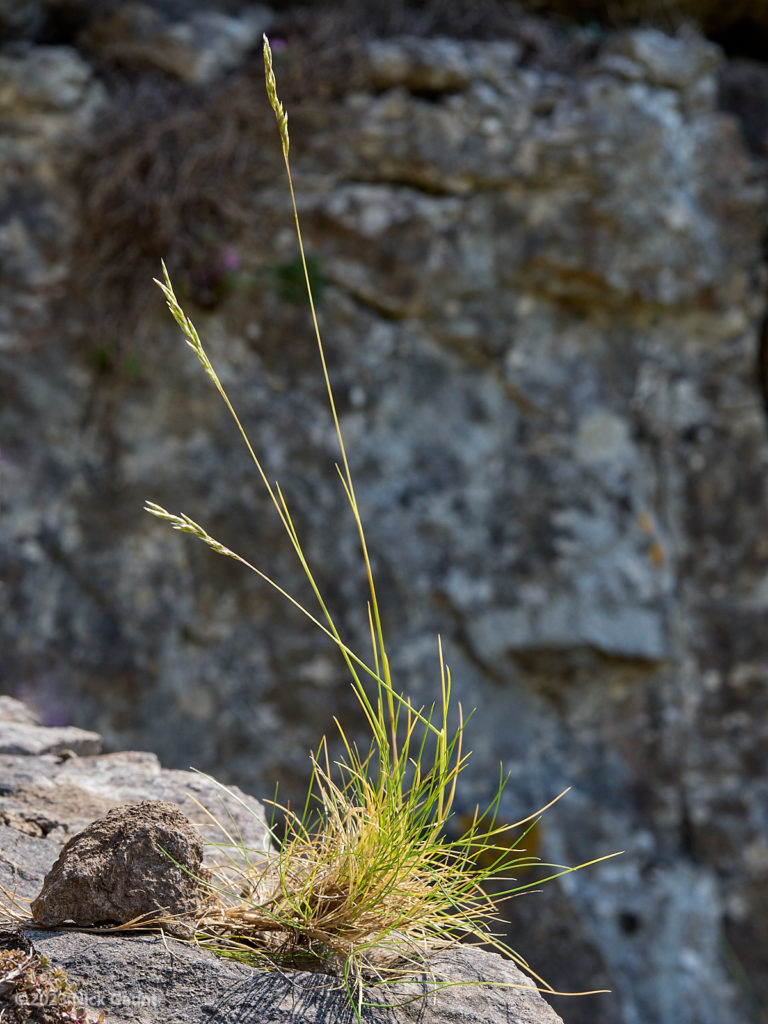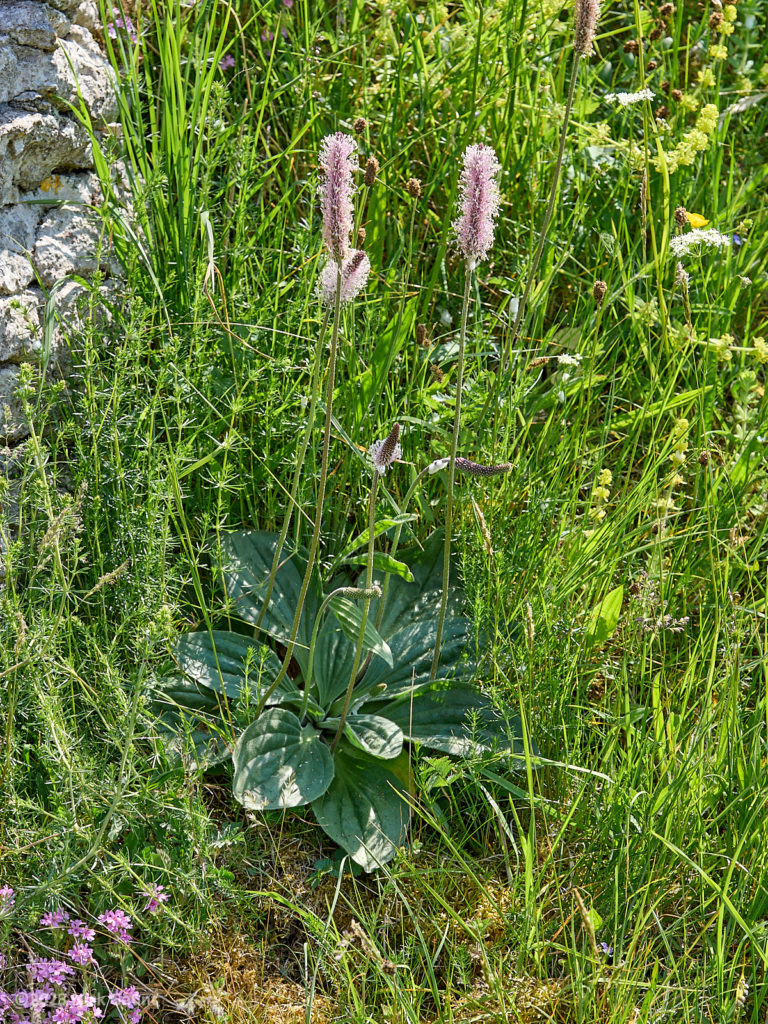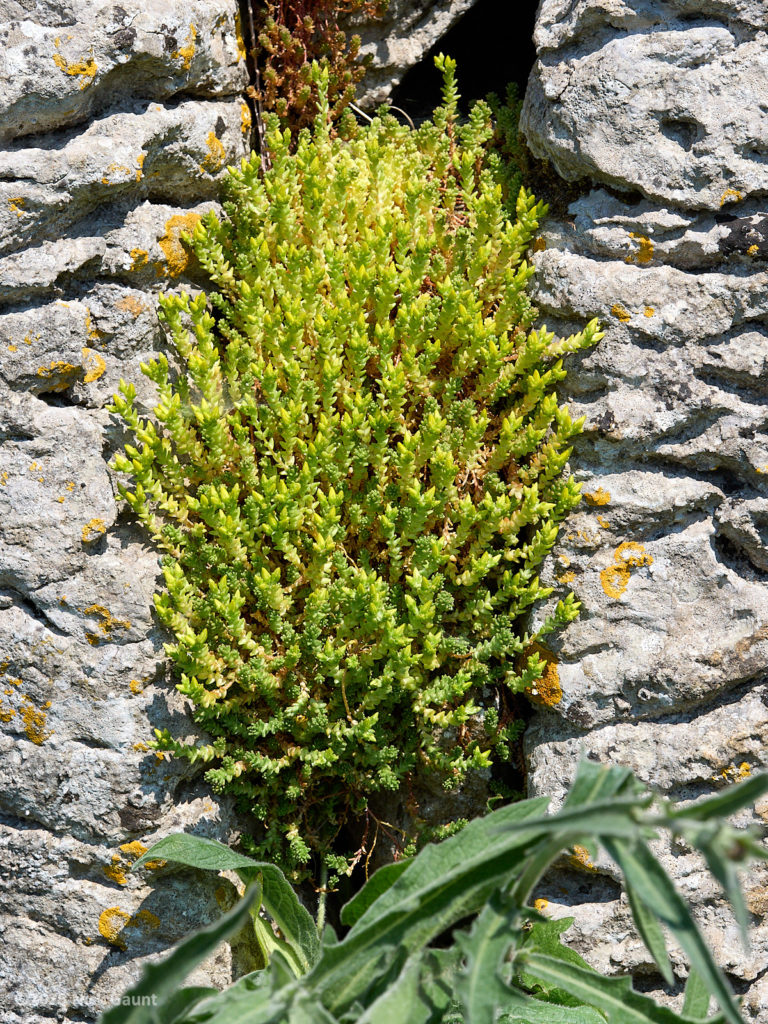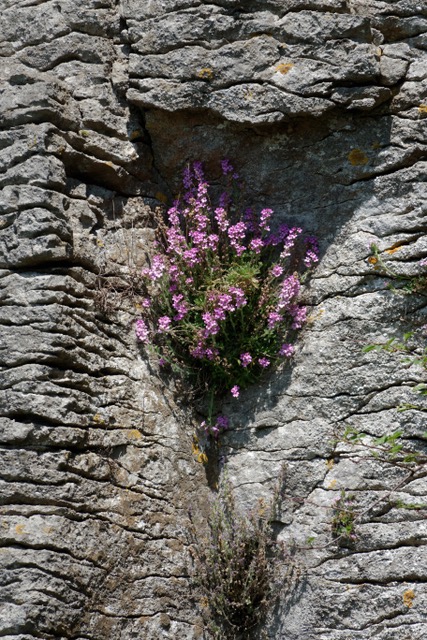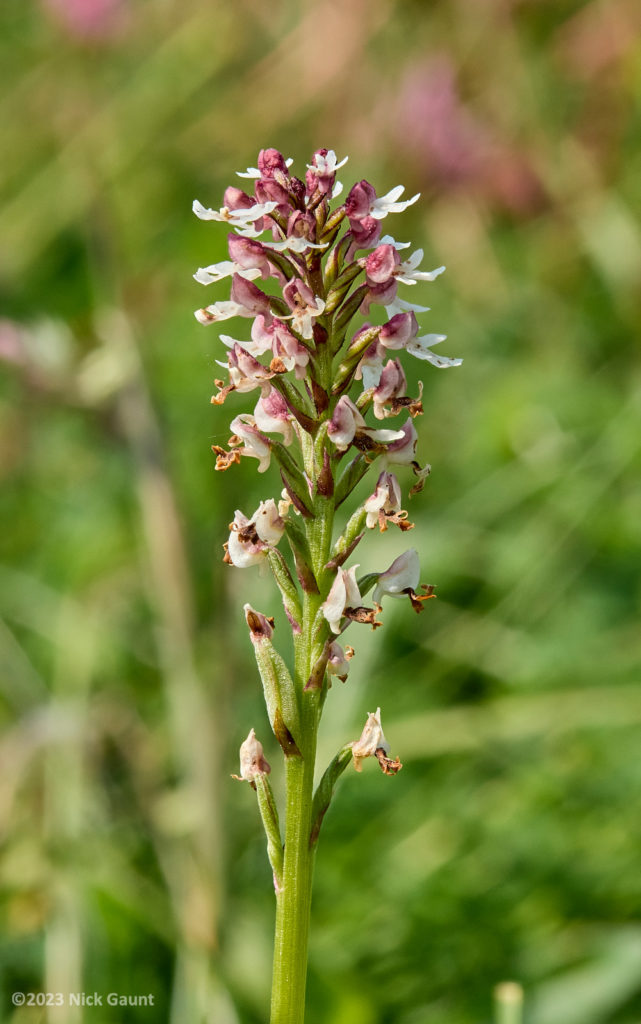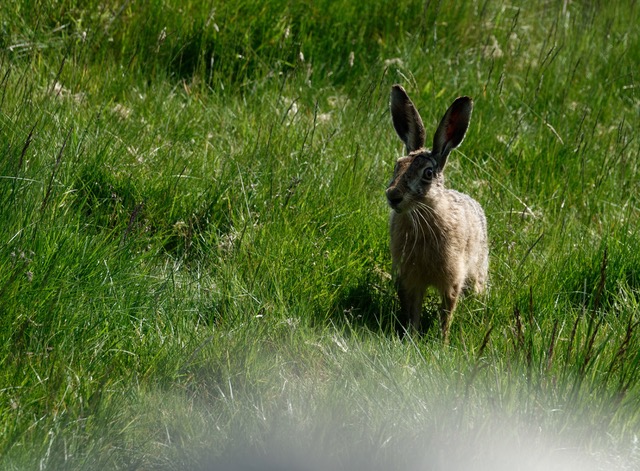Leader; Kevin Walker
Ballowfields LNR near Carperby consists of an area of grassland which was heavily contaminated by lead mining operations over 200 years ago. The beck which runs through the site has carried lead from the mines and specialised metallophytes now grow. Swathes of beautiful pink Thrift was the most obvious plant as we arrived. This plant usually is associated with cliffs and salt marshes. We saw Spring Sandwort (also known as leadwort) and Water Avens, but on looking for other specialised specimens, the result of the early summer drought and rabbit grazing was plain to see. Grasses and sedges were in good numbers by the stream side and Kevin helped us identify them. It was a beautiful day to be out in the field, with sightings of Spotted Flycatcher, Wheatear and Willow Warblers. And then we found it…. Moonwort, Botrychium lunaria, the most tiny little fern. It only grows up to 30cm but in the dry conditions it was much smaller. There were three specimens with grape like clusters of round sporangia. Equally tiny is the Alpine Pennycress, which we located on the same bank of the stream. It was rather burnt by the drought, but present, nevertheless.
The spoil heaps produced some interesting plants, surprisingly both Heath and Limestone Bedstraw, Heath Speedwell, Mouse-ear Hawkweed, Spear and Creeping Thistle, plus an individual plant which looked like a hybrid of the latter two. Many of the Bird Cherry trees were in the process of being consumed by a small army of little black caterpillars of Bird Cherry Ermine, which were emerging out of a mass of webs festooning their branches.
After lunch we relocated to YWT Seata Quarry NR, an old limestone quarry near Aysgarth. This site is very sheltered and the Early Purple Orchids were very much going over. The Fairy Foxglove however was well established on the limestone sides of the quarry. We found Hairy Rockcress, Hoary Plantain and Biting Stonecrop (which on biting into a small piece tastes rather peppery). Kevin managed to locate the Spiky Fescue which is an introduced species and is the only specimen in Britain. It is, as its name suggests, spiky to touch.
Of the nine who started the day, four retraced their steps to call in at YWT Old Glebe near Leyburn to see a Burnt Tip Orchid and five went their separate ways to enjoy what remained of a beautiful day in the Yorkshire Dales. The scenery around the sites had been fantastic and we all learnt a lot, thanks to Kevin’s patience. Many thanks to him.
Sue Coldwell
